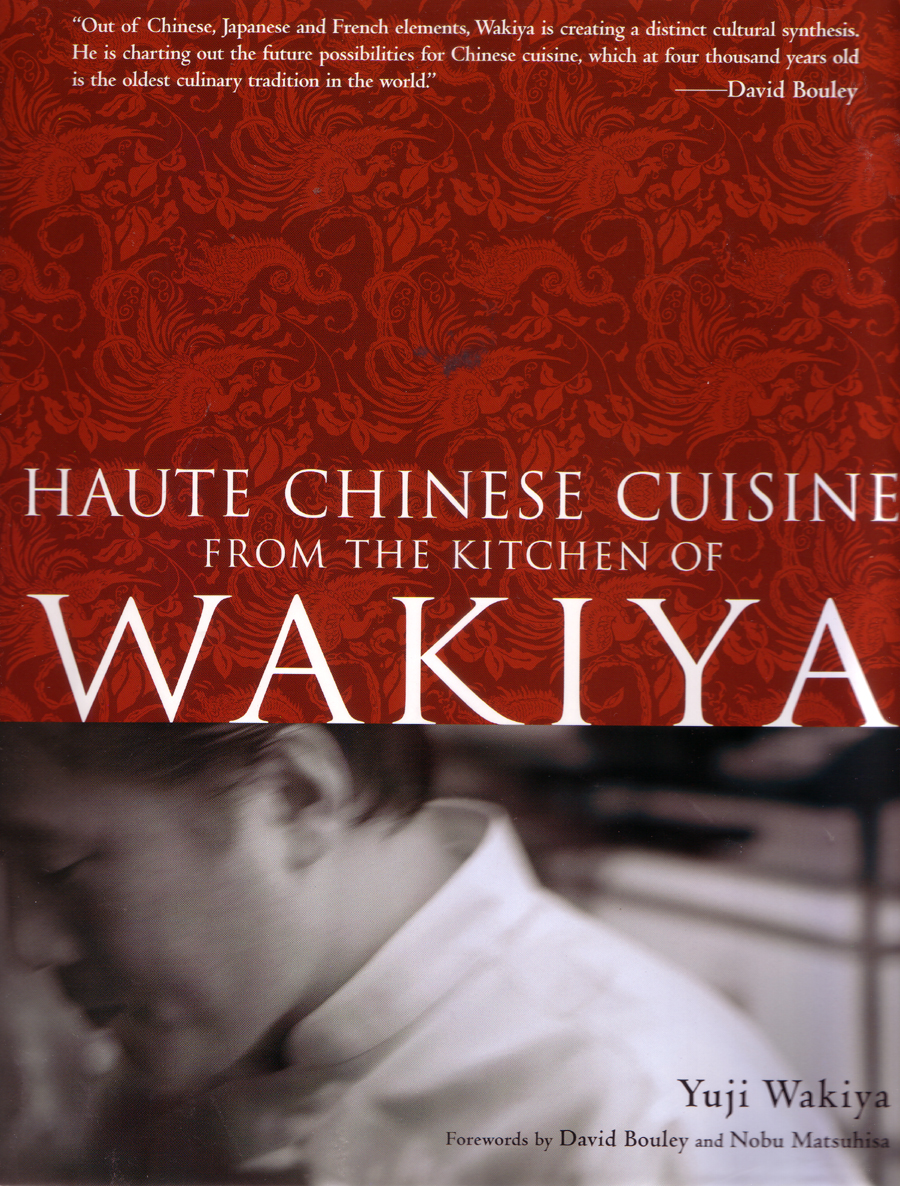
| What is Flavor and Fortune? |
| How do I subscribe? |
| How do I get past issues? |
| How do I advertise? |
| How do I contact the editor? |
Read 12878761 times
Connect me to:
| Home |
| Articles |
| Book reviews |
| Letters to the Editor |
| Newmans News and Notes |
| Recipes |
| Restaurant reviews |
| Article Index (all years, slow) |
| List of Article Years |
| Article Index (2025) |
| Article Index (last 2 years) |
| Things others say |
| Related Links |
| Log In... |
| Authors |
| Categories & Topics |
Haute Chinese Cuisine from the Kitchen of Wakiya
by: Yuji Wakiya
Tokyo Japan:
Kodansha International Ltd. 2008, $42.00, Hardbound
ISBN: 978-4-7700-3072-6
Reviewed by: Jacqueline M. Newman
Fall Volume: 2009 Issue: 16(3) page(s): 16
 A foreword by David Bouley and Nobu Matsuhisa sets the stage and upscale level expected when reading this native Japanese culinary genius’ book. We ate in his restaurant in Tokyo, and salivated as we turned its pages. We were prepared to try many of his recipes and once again taste his fantastic foods.
A foreword by David Bouley and Nobu Matsuhisa sets the stage and upscale level expected when reading this native Japanese culinary genius’ book. We ate in his restaurant in Tokyo, and salivated as we turned its pages. We were prepared to try many of his recipes and once again taste his fantastic foods.
Chef Wakiya was executive chef at a well-known Chinese restaurant in Japan at age twenty-seven. Then and now, his culinary genius melds Chinese, Japanese, and French aesthetics charting top-of-the-line future directions for Chinese food. His unique style, terrific taste buds, and depth of knowledge about Chinese cuisine marries Japanese understandings of culinary beauty, French fascination for fine cooking from scratch, and super Chinese textures and tastes.
Masashi Kuma, a well-known Japanese photographer's pictures are magnificent. They help readers virtually taste every recipe that begins with a half page treatise about the dish. Wakiya’s carefully crafted recipe follows, some titled typically, others less so. Every recipe is made with serious thoughts about looks and taste. The ones we tried at his restaurant and those tried from this book will remain in our repertoire for years .
One such is Stir-fried Beef Tongue. Precooked or blanched (we prefer to cook it from scratch as it is less salty), it uses seasoned strips of meat coated with eight different and perfectly blended ingredients. The dish is finished with the zest of yuzu lemon, chili pepper strips, and some napa mustard pickles. That recipe and eight other seasonal delights begin this beautiful culinary tome.
Gorgeous looking, even commonplace dishes such as Gong Bao Chicken are outstanding. It is served in a potato basket. The Tan Tan Noodles are super, too; they are served in and as a soup. His Sweet-spicy Pork curls into a lettuce leaf, and his Fried Rice made with delicate Shiso flowers is beautiful to see and savor.
The book has half a dozen food chapters, begins with seasonal splendors, and ends educating about basic techniques, reconstituting foods, a glossary of food and cooking terms, a list of antiques and serving ware used on its pages; also an index and acknowledgments.
We join Nobu who, on the rear cover, says he admires Yuji’s personality and adores his food. You will be rewarded if you try his recipes; and we bet you will love every one of them.
| Stir-fried Beef Tongue |
|---|
9 and 1/2 ounces beef tongue (the rear section and not the tip, preferred) salt and pepper to taste 2 Tablespoons beaten egg 1/2 Tablespoon potato starch 1/2 Tablespoon cake flour 1 cup soybean oil 1 teaspoon scallion oil 1/4 teaspoon minced scallion 1/4 teaspoon minced ginger 1/4 teaspoon minced garlic 1 Tablespoon Shaoxing rice wine 2 teaspoons soy sauce 1 teaspoon granulated sugar 1 teaspoon chicken stock 1 Tablespoon citrus zest, cut in fine strips 1 fresh red chili pepper, seeded and cut in fine strips 1 teaspoon sesame oil Preparation: 1. Cover and cook tongue in boiling water for thirty minutes, then remove and shock it in cold water and peel its exterior membrane, then cut tongue into one-quarter by one-quarter by two-inch strips. 2. Coat tongue with mixture of salt and pepper, beaten egg, potato starch, and cake flour. 3. In a wok, heat soybean oil to 360 degrees F and deep-fry tongue strips separating the pieces until it is cooked about seventy percent through, then drain on paper towels. 4. Remove all oil from the wok, add scallion oil and keeping heat low, add scallion, ginger, and garlic until fragrant; then turn heat up and add the tongue, rice wine, soy sauce, sugar, and soup–in that order. 5. Add the citrus zest and chili pepper strips, and finally the sesame oil, and remove to a serving plate. |

Copyright © 1994-2025 by ISACC, all rights reserved
Address
3 Jefferson Ferry Drive
S. Setauket NY 11720